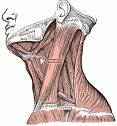The Human Body
The scientific term for the study of body structure is anatomy. The anatomy in Latin means “cutting,” because a fundamental way to learn about the human body is to cut it apart, or dissect it. Physiology is the term for the study of how the body functions, and is based on a Latin term meaning “nature.” Anatomy and physiology are closely related-that is, form and function are intertwined. The stomach, for example, has a pouch-like shape because it stores food during digestion. The cells in the lining of the stomach are tightly packed to prevent strong digestive juices from harming underlying tissue. Anything that upsets the normal structure or working of the body is considered a disease and is studied as the science of pathology.
Levels of Organization
All living things are organized from very simple levels to more complex levels (Fig. 1). Living matter is derived from simple chemicals. These chemicals are formed into the complex substances that make living cells-the basic units of all life. Specialized groups of cells form tissues, and tissues may function together as organs. Organs working together for the same general purpose make up the body systems. All of the systems work together to maintain the body as a whole organism.












Figure 1 Levels of organization. The organ shown is the stomach, which is part of the digestive system.
Contacts: lubopitno_bg@abv.bg www.encyclopedia.lubopitko-bg.com Corporation. All rights reserved.
DON'T FORGET - KNOWLEDGE IS EVERYTHING!